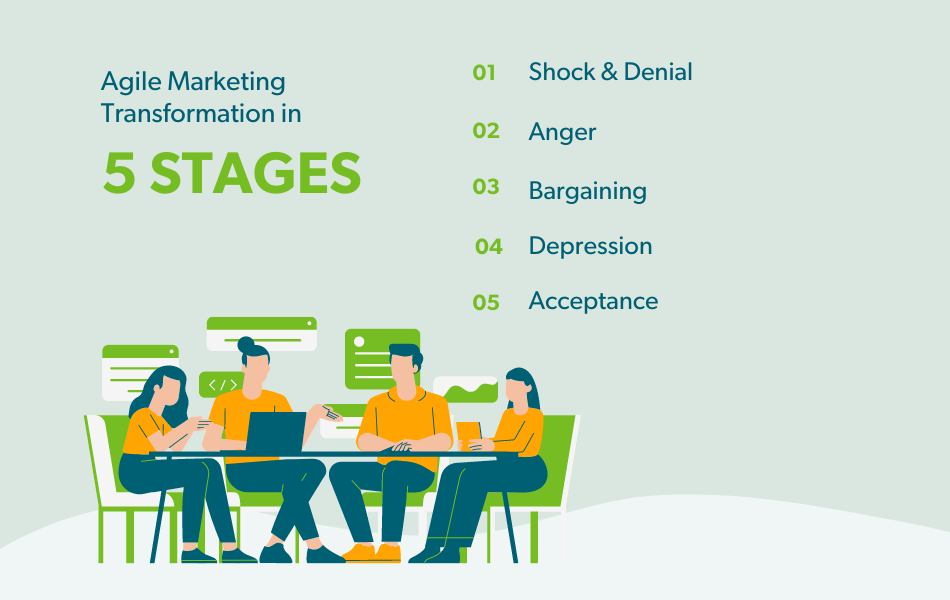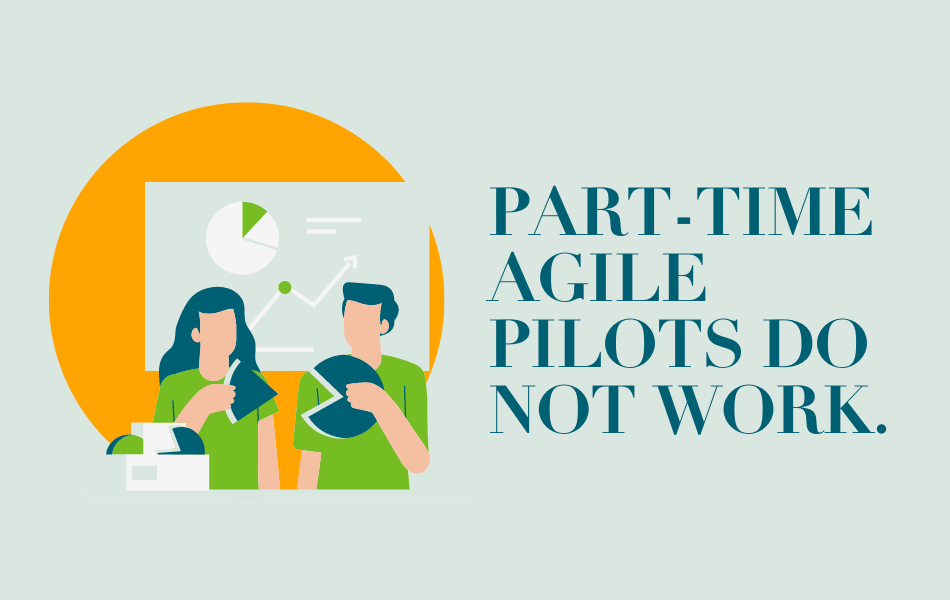Improve your Marketing Ops every week
Subscribe to our blog to get insights sent directly to your inbox.
Confront your process problems head on with a Sherpa by your side.
Explore support options that are tailored to meet you wherever you are on your climb.
Browse our pioneering Agile marketing courses
Learn from the stories of marketers already on the road to process improvement.
Featured Resource

State of Agile Marketing
Learn from 8 years of study on how marketers are increasing their agility.
Download Report
Just because we call it an Agile marketing “transformation” sadly doesn’t mean the process is always quick or easy. Case studies often make it seem like these transformations just happen.
The reality is that achieving true marketing Agility, let alone business Agility, is a real accomplishment, something hard-earned and well worth the effort. Making that transition as easy as possible starts with understanding what steps to expect and how you can react to them.
That’s why we’re breaking down the 5 stages of Agile marketing transformation via the classic Kübler Ross Change Curve. This framework helps us understand how people react to large changes as well as how their reactions can affect performance.
So you can know what to expect, how to quickly push your team to the next stage, and avoid the dreaded backsliding that so many Agile transformations fall victim to.

Agile marketing can be a big change for many team members, so it’s no surprise that many initially react by putting up defenses and resisting change. Often there’s a sense of comfort in planning months ahead of time even if that leads to longer lead times and cascading inefficiencies.
Ironically, this initial stage usually results in a small increase in productivity and engagement. This is because team members will band together to resist change, becoming more present and proactive at the moment to prove the current system works as-is.
You may even hear the traditional Agile-phobic refrains of “does this mean we won’t be planning?” Of course, that’s not how Agile marketing works, but it’s understandable that people new to it will have questions and fears.
This is why it’s so critical to start any Agile marketing transformation by getting buy-in from your stakeholders and, most importantly, your team. For most, the best way to do this is through training or coaching. Our 7th annual State of Agile Marketing Report found that a lack of training or knowledge about Agile approaches was by far the biggest barrier most teams face today.
When it sinks in that yes, your Agile marketing transformation is really happening, some team members may move into the anger stage. Frustration that things are changing and a feeling that they don’t have sufficient control over those changes can easily build tension in any marketing team.
Here it may be helpful to emphasize the greater autonomy that’s at the core of Agile marketing. Under Agile, they won’t be as reliant on others for knowing what their priorities are. So while they may feel frustrated or angry about the changes going on, the purpose of the changes is to empower them to be more autonomous.
Also bear in mind that for many, strictly adhering to a specific Agile framework isn’t the best way to go. Often a hybrid approach more precisely tailored to a team’s specific needs performs better. If team members feel that the way Agile is being implemented doesn’t fit their needs, working with them to craft a hybrid approach may give them a better sense of ownership over the process.
Before exploring the next stage, why don't you take a second to get our Agile Marketing Transformation Checklist?
At this stage, you’ve overcome the initial resistance, you’ve hopefully gotten your team some training, coaching, or even crafted your own hybrid Agile framework. But that won’t always stop everyone from holding back a bit. By this point that resistance often takes the form of bargaining: searching for the path of least resistance.
This may sound like “fine, I’ll use the Kanban board but I don’t want to have to attend daily standups.”
The problem is, while hybrid approaches to Agile marketing are great, having different team members only doing half-Agile isn’t. Unlocking the full benefits of Agile marketing really requires going fully in and adopting Agile as more than just a series of things you do but as a way you work and think. Part-time Agile pilots do not work.

So if you’re going to bargain with your team members or stakeholders, but be sure to do so around what kind of Agile you’ll be implementing. A mixture of two types of Agile is great, but a mixture of Agile and non-Agile is not. So focus the attention of the bargaining phase towards finding the right form of Agile for your organization. This will ultimately give you the best chance of success.
By this point, remaining reluctant team members may finally realize that Agile is coming whether they like it or not, and move on to the depression phase. At this point, they might simply be tired of resisting at this point and instead resorting to pretending to do Agile to get their bosses off of their backs.
As a result, they may think they’re “doing Agile” but not seeing the benefits. The problem here is that seeing the benefits of Agile for themselves is the best way to enable team members to understand its value. So it’s important to ensure that your teams aren’t just going through the motions.
It can also be helpful to frame your Agile transformation as a chance to pioneer a new way of working for the entire organization. Often, Agile originates in functions like software development before marketing or sales gives it a try. So remind your team that you’re blazing a path forward for everyone else and that other functions will soon be looking to them for guidance and inspiration.
Phew, you’ve finally made it! This is the moment when your marketing team members will finally see the benefits Agile offers them. Now it’s time to take stock, understand what worked and didn’t about your Agile transformation, and be ready to implement those learnings.
This will be particularly important when other functions within your organization start knocking at your door asking about how you did it. In fact, when you have teams who have reached this stage, you should use the opportunity to have them socialize with teams in the depression phase. It’s a chance to show the latter just what benefits they can unlock through Agile.
Remember, Agile doesn’t work without psychological safety. Team members need to trust one another to be truly Agile and autonomous. So going through these steps is often a difficult but necessary series of steps towards building genuine buy-in and trust amongst your team.
It’s essential that throughout all 5 of these steps you are patient, show leadership, and model behavior. Your team needs to see that Agile isn’t something you’re arbitrarily imposing on them, but something you genuinely believe will improve how you all work together.
That said, it doesn’t have to be so difficult! As we mentioned before, years of data have shown that Agile training and coaching coupled with good leadership is the single best way to get through the more difficult stages of an Agile marketing transformation as quickly as possible.
To assess how ready you are for the transformation, don't forget to download our Agile Marketing Transformation Checklist.
Subscribe to our blog to get insights sent directly to your inbox.
Subscribe to our blog to get insights sent directly to your inbox.